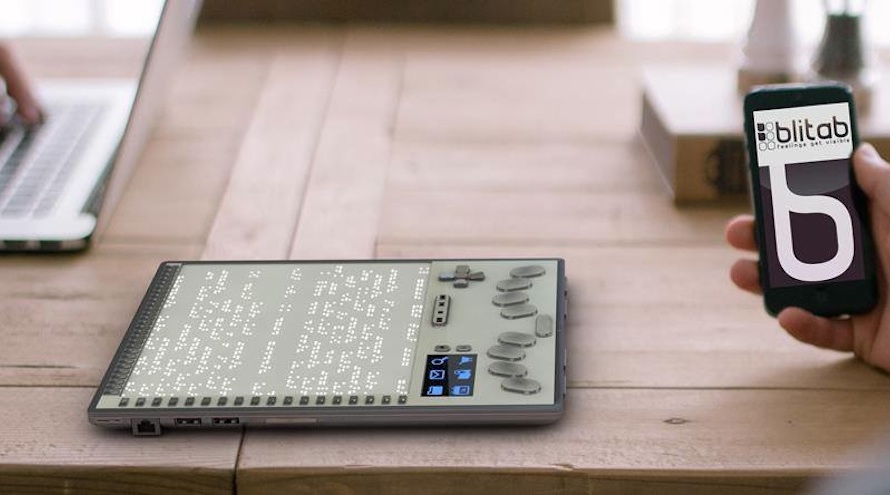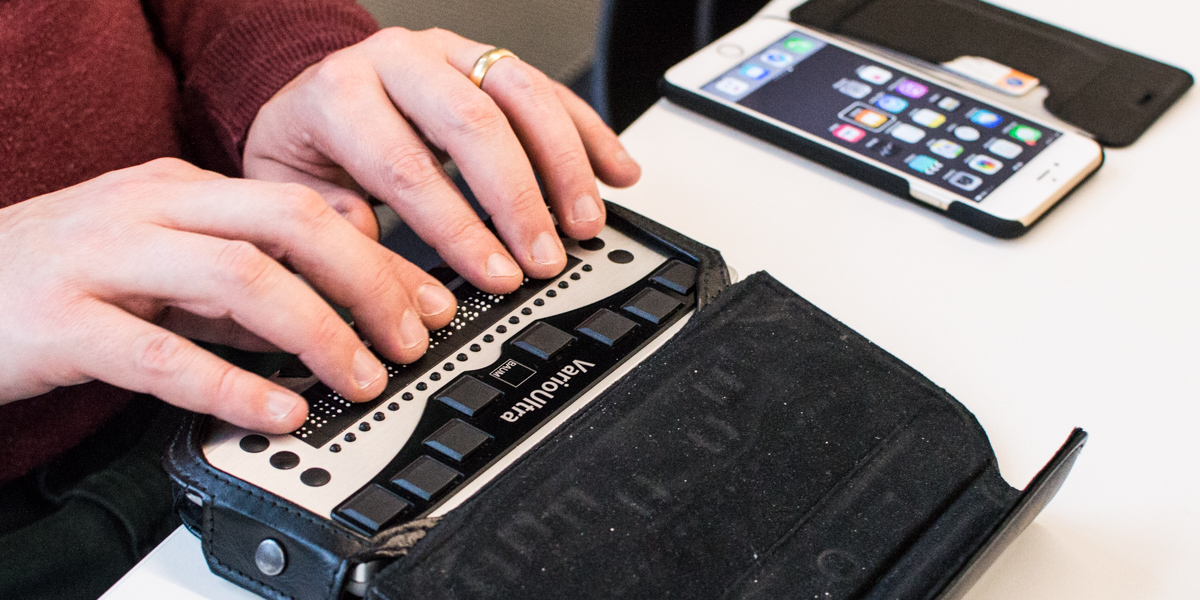Assistive Technology for the Blind: Tools to Transform Lives
Assistive Technology for the Blind: Tools to Transform Lives
Blog Article
Empowering Self-reliance With Assistive Modern Technology for the Blind
The combination of assistive modern technology right into the lives of people with aesthetic disabilities represents a significant development in advertising independence and self-sufficiency. From innovative screen visitors to sophisticated clever walking canes, these devices not only improve day-to-day navigation and communication but likewise empower users to engage meaningfully in different facets of life. As we explore the myriad benefits and real-world applications of these modern technologies, it becomes crucial to analyze the hidden variables that add to their efficiency and the possibility for future developments in this essential field.
Overview of Assistive Technology

The growth of assistive innovation is based in principles of inclusivity and empowerment. Advancements in software program, hardware, and sensory enhancements provide individuals with choices customized to their details demands. From screen readers that convert text to speech, to tactile gadgets that share information via touch, these devices change the method people involve with their environments.
In enhancement to functional applications, assistive modern technology cultivates better social inclusion and participation in numerous markets, including education and learning and work (Voice-activated assistive devices). As r & d remain to progress, the potential for assistive modern technology to further improve the lives of aesthetically impaired people stays encouraging, paving the method for an extra equitable society where everyone can grow
Types of Assistive Instruments
A selection of assistive gadgets have actually emerged to sustain people with visual impairments, each created to fulfill specific needs and improve everyday functioning. These tools vary from low-tech services to modern developments, supplying varied alternatives for customers.
Low-tech tools consist of magnifiers and large-print materials that assist in reading and writing. Braille tools, such as Braille slates and styluses, make it possible for responsive reading and interaction. Orientation and wheelchair aids, like white walking sticks, assist customers browse their atmosphere securely.
On the greater end of the spectrum, electronic zoom systems and screen readers supply substantial assistance. Digital magnifiers permit individuals to enlarge text and images on displays, while display viewers transform digital content into manufactured speech, helping with accessibility to information on computer systems and smartphones.
Smart device applications likewise play an essential duty, offering functions like text acknowledgment and navigating support. Wearable innovation, such as smart glasses furnished with augmented truth, is becoming a promising tool to improve situational recognition.
Benefits of Assistive Technology
The assimilation of assistive technology substantially enhances the top quality of life for people with visual disabilities. These modern technologies encourage customers by advertising self-reliance, enabling them to navigate their environments better and perform daily jobs with better simplicity. Display readers and magnifying software program permit people to access electronic details, cultivating specialist and instructional possibilities that may have previously been out of reach.
In addition, assistive gadgets such as smart walking sticks and GPS applications supply real-time navigating support, boosting wheelchair and security. This increased freedom not only enhances self-confidence but likewise encourages social interaction, allowing users try this out to take part even more completely in their areas.
Assistive innovation likewise facilitates communication, aiding customers link with others with voice recognition and text-to-speech applications. This ability is essential for preserving connections and accessing critical info.
Additionally, the personalization alternatives available with many assistive modern technologies guarantee that customers can tailor gadgets to their certain demands, better improving functionality and efficiency. In general, the advantages of assistive innovation for people with visual impairments are profound, advertising an extra inclusive society where everybody can seek their ambitions and goals.
Instance Research Studies and Success Stories
Highlighting the transformative influence of assistive innovation, numerous study illustrate just how individuals with visual impairments have successfully incorporated these devices into their lives. One compelling instance involves an university student that made use of screen reading software application to navigate online sources and academic materials properly. This technology not just promoted her education and learning yet also improved her confidence in participating in conversations and team tasks.
One more situation research features a specialist that uses a smartphone application developed for navigation and item acknowledgment. By utilizing this application, he has regained autonomy in both his individual and work environments, permitting him to commute independently and engage with colleagues better.
Furthermore, a retiree shared her experience with braille e-readers, which enabled her to access a substantial variety of literary works and stay gotten in touch with her area via publication clubs.
These success tales highlight the vital role of assistive modern technology in fostering independence, improving top quality of life, and promoting social combination for individuals with visual disabilities (Assistive technology for the blind). By embracing these cutting-edge devices, individuals can get rid of difficulties and take opportunities that add to their professional and individual satisfaction

Future Fads in Assistive Technology
Technology in assistive modern technology is positioned to redefine the landscape of assistance for people with visual disabilities. Arising fads stress the assimilation of artificial knowledge (AI) and artificial intelligence, which boost the performance of tools that aid with navigating and details availability. As an example, AI-driven applications are currently capable of translating visual data in real-time, enabling individuals to involve with their environment much more separately.
Additionally, the growth of wearable technology is advancing swiftly. Smart glasses geared up with augmented truth (AR) can supply audio summaries of surroundings, transforming just how users engage with public spaces. These devices not only promote freedom but likewise foster social inclusion.
In Addition, the Net of Points (IoT) is making homes smarter, permitting smooth connection in between assistive gadgets and daily this content appliances. This connectivity equips individuals by enabling computerized responses and voice-activated controls tailored to private needs.
Verdict
Finally, assistive innovation plays a pivotal role in equipping individuals with aesthetic problems by improving their independence and involvement with their surroundings. The varied variety of tools and applications readily available not only facilitates navigation and interaction but additionally promotes social combination and opportunities for personal and expert growth. As innovations continue in this area, the possibility for boosting the lifestyle for those with visual disabilities will increase, cultivating better autonomy and empowerment.

Report this page